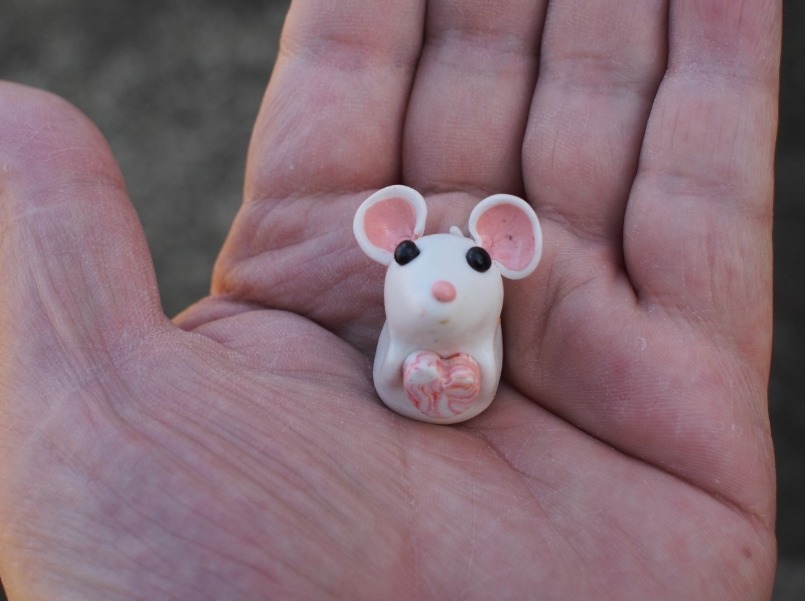You know the feeling all too well. It could happen anywhere in your house—maybe you’re cooking dinner in the kitchen, watching TV in the living room, or about to go to bed in the bedroom. Suddenly, you see movement out of the corner of your eye.
You quickly turn and there, right in front of you, is that little critter who darts away into a tiny hole. You cringe, knowing that if there’s one, there’s probably more.
“They’ve gotten so good at living with humans. When you get one, others will find their way in. Plus, they multiply very quickly,” Cindy Mannes, a spokesperson for the National Pest Management Association, told Good Housekeeping.
Sound familiar? Of course it has—we all get mice in our house on occasion. It’s how you go about treating the problem that will determine whether they keep coming back or not.
If you try home remedies such as making your own mouse-killing repellent, you’re likely not doing anything to solve the problem for good.
“There’s no science or evidence behind any of these methods,” says Mannes. “And again, mice are so used to living with humans, that smells associated with us are not usually repellent to mice.”
However, if you’d like to give some of these preventative methods a try, dab scents like Tobasco sauce, mint, and cayenne pepper around your home and at potential entry points. Supposedly, a mouse’s intense sense of smell will make scents like this too overwhelming and thus drive them away.
But, like Mannes said, there is no guarentee that this natural repellent will deter a rodent invasion. Here are some of the best steps to keep rodents out of your house for good:
Step one: Buy some mouse traps.
Continue to the Next Page …
Step one: Buy some mouse traps.
Yes, the most cliché way to get rid of mice is actually one of the most efficient. “The tried-and-true mousetrap is still very effective,” says Mannes. To increase your chance of catching the mouse, add a little dollop of peanut butter on the edge of each trap to lure them in.
For anyone cringing at the thought of killing a little animal (or maybe just at the thought of a bunch of dead mice in your home), there are plenty of humane traps that will capture the critter alive so you can take them at least a mile away from your home (otherwise, they will find their way back.) This Smart Mouse Trap is one of the most inexpensive and effective on Amazon. However, where there’s one mouse, there’s bound to be more – so it might take some time and patience if you’re going to go this route.
Continue to the Next Page …
Step two: Find their home.
Like we said, if there’s one, there’s probably a whole family. So, find out where their mouse motel is located, and kick them out for good. A professional exterminator can likely help you out with this if searching for mouse homes will make you a little queasy. Once you’ve tracked that down, you can set up traps around that area (the exterminator will also be able to help with the ideal spots to place them).
Continue to the Next Page …
Step 3. Close up their home.
When we said kick them out for good, we really mean it. In order to do this, you’ll need the right supplies to ensure no other rodents can chew their ways in. Experts recommend caulk and steel wool, which they can’t eat through.
“Pay really close attention to where pipes enter the house and along basement foundations. Be sure to replace weather stripping. And make sure you’ve screened the vents and the openings of your chimneys,” Mannes says.
Continue to the Next Page …
Step 4. Check other unsuspecting places.
You might think once their place of entry is sealed up, you’ll be good. But mice might be hiding in some unsuspecting places—for example, the hood of your car in your garage since it’s nice and warm under there. And if mice do get under there, they can cause serious damage to your car, not to mention get back into your house and start the whole process over again!
Continue to the Next Page …
Step 5: Prevent them from getting back in.
Start with the outside of your home and make sure any shrubs and branches are cut back, away from your house. “Otherwise, they’re like highways for mice and insects to get into your home,” Mannes says. Go through your home from top to bottom and close up any potential entry points for rodents. Professionals suggest using steel wool to close up smaller holes and wire mesh for bigger holes.
Additionally, do little things inside your home, like putting cereal, grains, etc. into airtight canisters, or avoiding leaving pet food out in bowls on the floor.
From: tiphero
